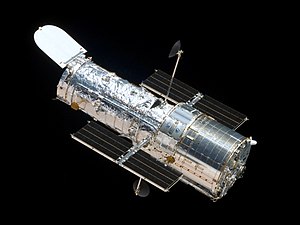Three billion miles away on the farthest known major planet in our solar system, a sinister, dark storm – once big enough to stretch across the Atlantic Ocean – is shrinking out of existence as seen in pictures of Neptune taken by NASA’s Hubble Space Telescope.
Just like Jupiter’s Great Red Spot, the storm swirls in an anti-cyclonic direction, and is pulling material up from within Neptune’s atmosphere. But unlike Jupiter’s Great Red Spot, which has been visible for at least 200 years, Neptune’s storm has only appeared in the last few years, and is already dying.
The Hubble Space Telescope (HST) is a space telescope that was launched into low Earth orbit in 1990. Hubble is one of the largest and most versatile, and is well known as both a vital research tool and a public relations boon for astronomy. The HST first spotted the dying storm on Neptune in 2015 and has kept an eye on it over the past few years.
Immense dark storms on Neptune were first discovered in the late 1980s by NASA’s Voyager 2 spacecraft. Since then, only Hubble has had the sharpness in blue light to track these elusive features that have played a game of peek-a-boo over the years. Hubble found two dark storms that appeared in the mid-1990s and then vanished. This latest storm was first seen in 2015, but is now shrinking.
According to NASA, the storm is probably made of hydrogen sulfide. “We have no evidence of how these vortices are formed or how fast they rotate,” Agustín Sánchez-Lavega from the University of the Basque Country, said in the statement. “It is most likely that they arise from an instability in the sheared eastward and westward winds.”
“We thought that once the vortex got too close to the equator, it would break up and perhaps create a spectacular outburst of cloud activity.” That wasn’t the case. Instead, the storm seems like it’s just fading into nothing as it moves toward Neptune’s south pole and not the planet’s equator as expected, NASA said


